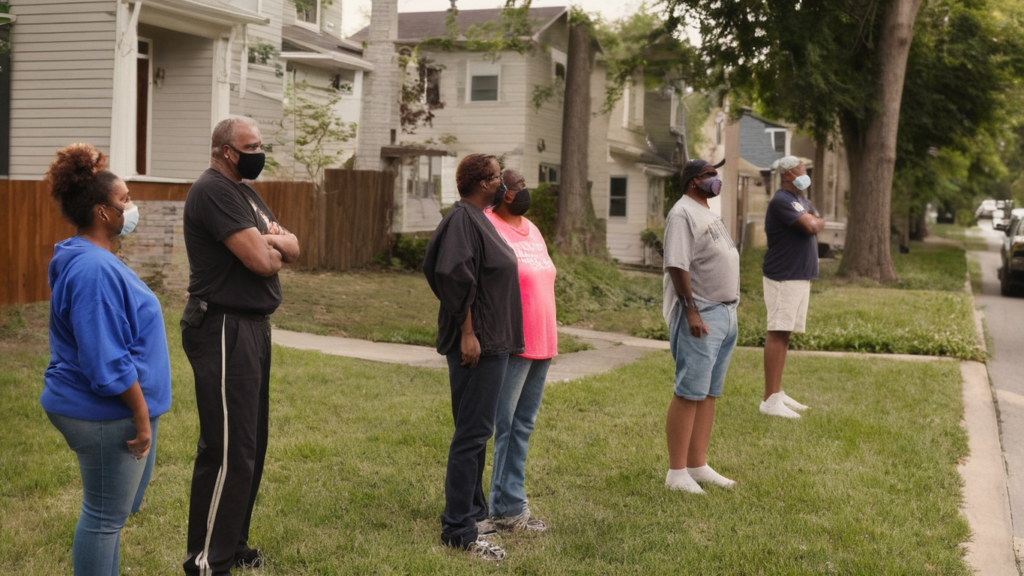
When disaster strikes, whether it’s a natural calamity, economic collapse, or any other catastrophic event, community organization becomes paramount. Preparing your neighborhood for such events ensures not only your survival but also that of those around you. Here, we provide a comprehensive guide to help you effectively organize your neighborhood when the SHTF (Sh*t Hits The Fan).
Understanding the Importance of Community Cohesion
In times of crisis, community cohesion can significantly enhance your chances of survival. A united neighborhood can share resources, skills, and information, providing a robust support system. Establishing strong relationships with your neighbors before a disaster can pave the way for efficient and effective collaboration when it matters most.
Steps to Foster Community Relationships
- Host Regular Meetings: Arrange regular neighborhood meetings to discuss preparedness plans, potential risks, and resource allocation. These gatherings help build trust and ensure everyone is on the same page.
- Create a Communication Network: Establish a reliable communication network using radios, phone trees, or messaging apps. This network will be crucial for disseminating information quickly during an emergency.
- Develop a Neighborhood Directory: Compile a directory that includes contact information, skills, and resources of each household. This directory will be invaluable for coordinating efforts and sharing resources.
Assessing and Utilizing Neighborhood Resources
Identifying and utilizing local resources is a key aspect of neighborhood preparedness. Conducting a thorough assessment of available resources will help you create a robust and resilient community.
Resource Inventory Checklist
- Water Sources: Identify natural water sources, such as rivers, lakes, and wells, and plan for water purification methods.
- Food Supplies: Encourage households to maintain a stockpile of non-perishable foods. Consider establishing community gardens to grow fresh produce.
- Medical Supplies: Stockpile essential medical supplies and designate individuals with medical training to provide first aid.
- Tools and Equipment: Inventory tools and equipment that can be used for repairs, building shelters, or other necessary tasks.
- Skills and Expertise: Identify individuals with useful skills such as medical professionals, engineers, mechanics, and cooks. These skills will be crucial in maintaining community functionality.
Establishing Safety and Security Protocols
Safety and security are paramount during a crisis. Developing and implementing effective protocols can protect your neighborhood from external threats and internal conflicts.
Creating a Security Plan
- Perimeter Defense: Set up a system to monitor and secure the perimeter of your neighborhood. This may include patrols, barriers, and surveillance.
- Emergency Response Teams: Form teams responsible for different aspects of security and safety, such as first aid, fire response, and conflict resolution.
- Communication Signals: Develop a set of communication signals or codes to quickly convey messages about potential threats or emergencies.
Training and Drills
Conduct regular training sessions and drills to ensure everyone knows their roles and responsibilities. These exercises will help your community respond effectively and efficiently during an actual emergency.
Developing an Emergency Preparedness Plan
A detailed emergency preparedness plan is crucial for any neighborhood. This plan should outline specific actions to be taken before, during, and after a disaster.
Key Components of an Emergency Preparedness Plan
- Evacuation Routes: Identify and map out multiple evacuation routes in case of various disaster scenarios.
- Safe Zones: Designate safe zones within and outside the neighborhood where people can gather during an emergency.
- Resource Allocation: Plan how to distribute resources such as food, water, and medical supplies to ensure they last as long as possible.
- Communication Protocols: Establish clear communication protocols to keep everyone informed and coordinated.
- Special Needs Consideration: Include provisions for neighbors with special needs, such as the elderly, disabled, or those with medical conditions.
Building Community Resilience
Resilience is the ability to adapt and thrive despite challenges. Building a resilient community involves ongoing efforts to improve preparedness and adaptability.
Encouraging Self-Sufficiency
Promote self-sufficiency by encouraging households to develop skills and resources that reduce dependency on external assistance. This includes:
- Gardening and Food Preservation: Teach neighbors how to grow and preserve their own food.
- Renewable Energy Sources: Encourage the use of solar panels, wind turbines, and other renewable energy sources to reduce reliance on the grid.
- Water Conservation and Collection: Implement rainwater collection systems and promote water conservation practices.
Continuous Improvement and Adaptation
Regularly review and update your preparedness plans and protocols based on new information and experiences. Conduct debriefings after drills and real events to identify areas for improvement.
Conclusion
Organizing your neighborhood when the SHTF is a multifaceted endeavor that requires cooperation, planning, and resilience. By fostering strong community relationships, assessing and utilizing resources, establishing safety protocols, developing comprehensive preparedness plans, and building community resilience, you can ensure that your neighborhood is well-equipped to face any crisis. Together, a united and prepared community stands a much better chance of not only surviving but also thriving in the face of adversity.
Powered by Azon AutoSites
